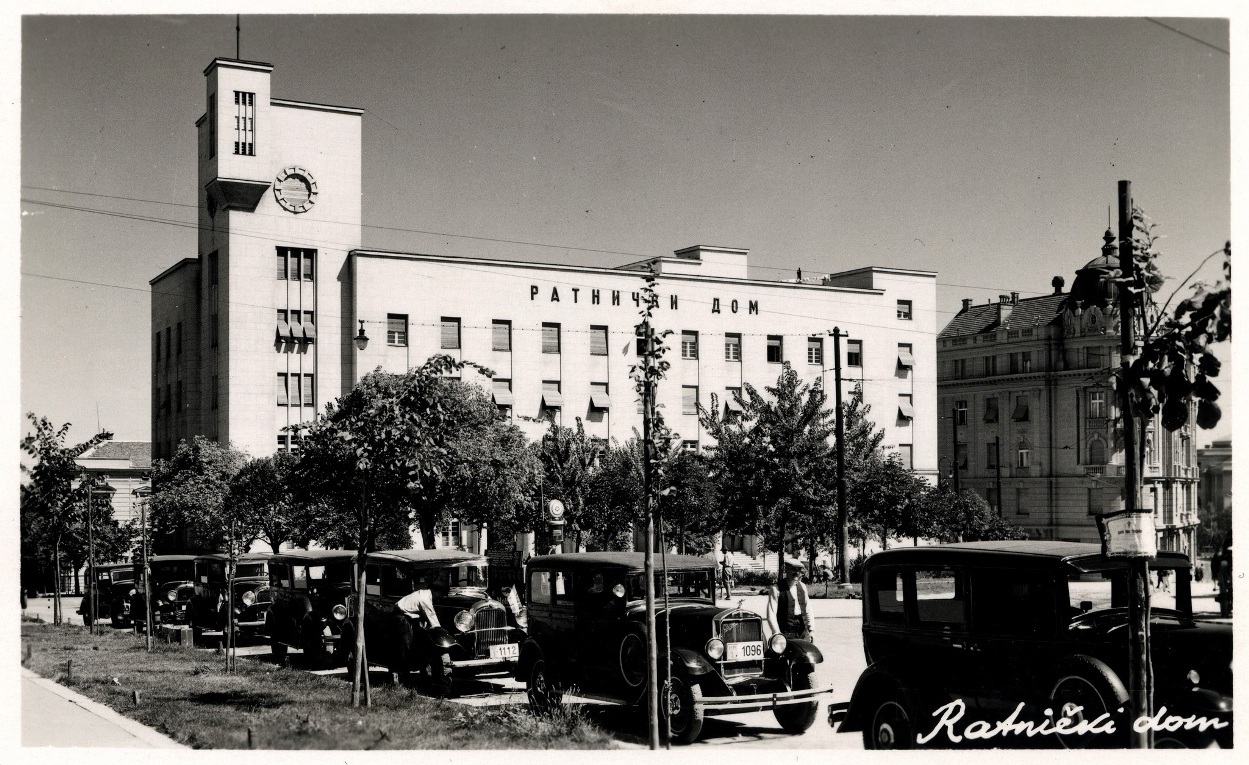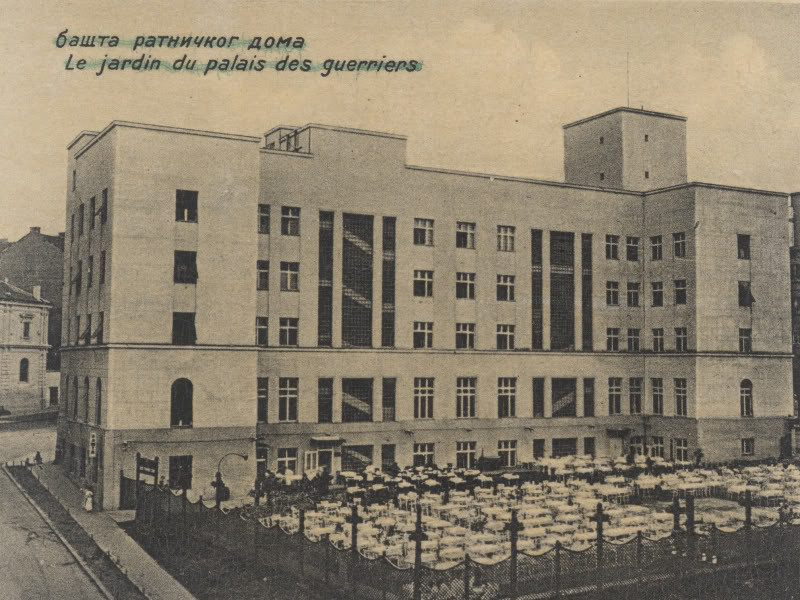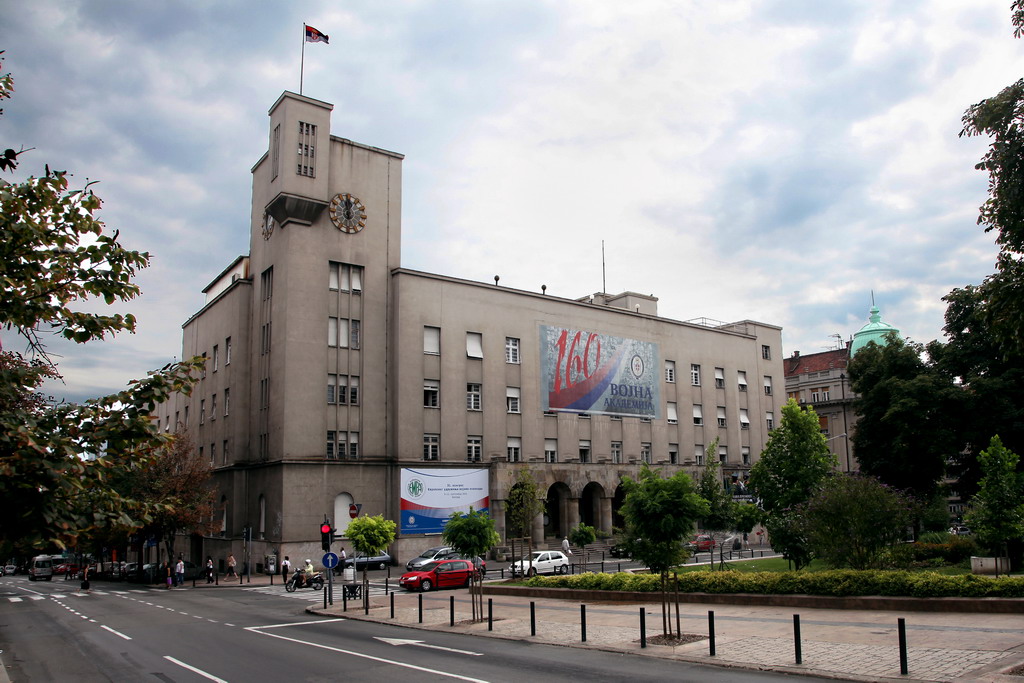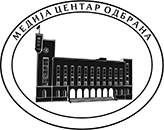About Central Military Club
In mid-May 1929, with the intention to build a monumental building for military purposes in the central city area to be the most appropriate way to show the power of the state apparatus of defence and protection, a tender was announced for the construction of the "Warrior House." The contest was especially mindful of the respect of clearly defined propositions, which were primarily related to the appearance and function of the future building that was supposed to bring together "not only the associations of warriors, but also all national and cultural societies in the capital."

In the spirit of modern architecture with elements of expressionism of 1940s, and according to the design by professors and architects Jovan Jovanovic and Zivko Piperski the palace of the Central Military Club was built, originally the "Warrior House." The building was built on the land that the Municipality of Belgrade gave to former warriors for a summer bicycle track of the Velocipede Club with funds and personal contributions of the Association of reserve officers and warriors of the Kingdom of Serbia between two world wars.
The construction of the palace "Warrior House" was officially opened in December 1929 and lasted until 24 November 1931, when the building was completed. By 1934, all departments were moved in the facility, when the institution officially achieved full operational capacity.

The building was built with the base in the form of the Cyrillic letter P, as a free block surrounded by Brace Jugovica Street, Francuska Street, Simina Street and Emilijana Josimovica Street. Apart from two underground floors, the building has a basement, ground floor and three floors with a roof terrace. On the symbolic side, the donjon clock tower that marks the corner of Francuska Street and Brace Jugovica Street particularly stands out. This tower was to be a symbolic link of the role of Kalemegdan observing towers, as part of the complex of the Belgrade Fortress, and one of the symbols of Serbian liberation from Ottoman rule, while the public monumental clock marks the new era that carries a strong message of strengthening of Yugoslav national identity in the Kingdom of Yugoslavia. It was further expected to be contributed by eight sculptures that were planned to be placed above the arcades on the main facade. The original project was planned to have above each column in the entrance area life-size sculptures of an armourer from the time of the Nemanjic dynasty, a warrior from the reign of Emperor Dusan, a fighter from the Battle of Kosovo, a minstrel, a rebel from the First Serbian Uprising, a soldier from 1876, a soldier from 1912 and a Yugoslav soldiers with helmet from 1918. Seven large entrance doors were made in the tradition of seven-door Zica.
The building, in addition to military purposes, was to serve for the development of relations with civil sector in close cooperation with various cultural associations that have occupied the building of the House immediately after its construction. Among them the most active were the Association of reserve officers and warriors, Adriatic Guard, Association of volunteers, Sokolska Matica, the Society of Friends of France and others. After the added part to Simina Street, officers from middle Serbia during the service in the capital were also accommodated here.
In 1939 the building was expanded to Simina Street and base was closed in the form of a square. Previously, the plateau towards Simina Street, within the block of the building, was used as a summer garden where various celebrations held.

During World War II the building was used by the German military authorities. In August 1941, officers of the Wehrmacht moved into the building. The Warrior House became the headquarters of the Gestapo Command for the southern Balkans.
After the liberation of Belgrade, the House of Yugoslav Army was officially established on the first anniversary of the Day of Victory over Fascism, on 9 May 1946. The first Commander and Chief of the House was famous professor, war colonel, painter and graphic artist Branko Sotra. By the decision of the Belgrade City Assembly, the building was declared cultural heritage in 1984.

Throughout its rich history, this house has been visited by famous personalities of the political and cultural life: Josip Broz, Ernesto Che Guevara, Ivo Andric, Branko Copic, Desanka Maksimovic, Nikola Ceausescu, Patriarch Pavle, Patriarch Irinej, Emir Kusturica, Petar Kralj, Ljuba Tadic, Novak Djokovic, Oliver Njego, Zubin Mehta, Bubisa Vojislav Simic, Stefan Milenkovic, Ivo Pogorelic, Matija Beckovic, presidents of Serbia and numerous personalities of the international political scene.
The Central Military Club as a unique house of culture continues, with its activities, to encourage and improve the level of information and education, both of professional members of the Serbian Armed Forces and the civil sector through the exhibition programmes, concert content, book launches, panel discussions, and lectures. In the building of the Central Military Club, there are modern rooms, which are used for maintenance of various events such as receptions, conferences, seminars, lectures, business celebrations, fairs, presentations, cocktail receptions, balls, fashion shows, weddings and other private parties.
Since 2010, the Central Military Club has become the home of Odbrana Media Centre and the Art Ensemble "Stanislav Binicki".
External links:

